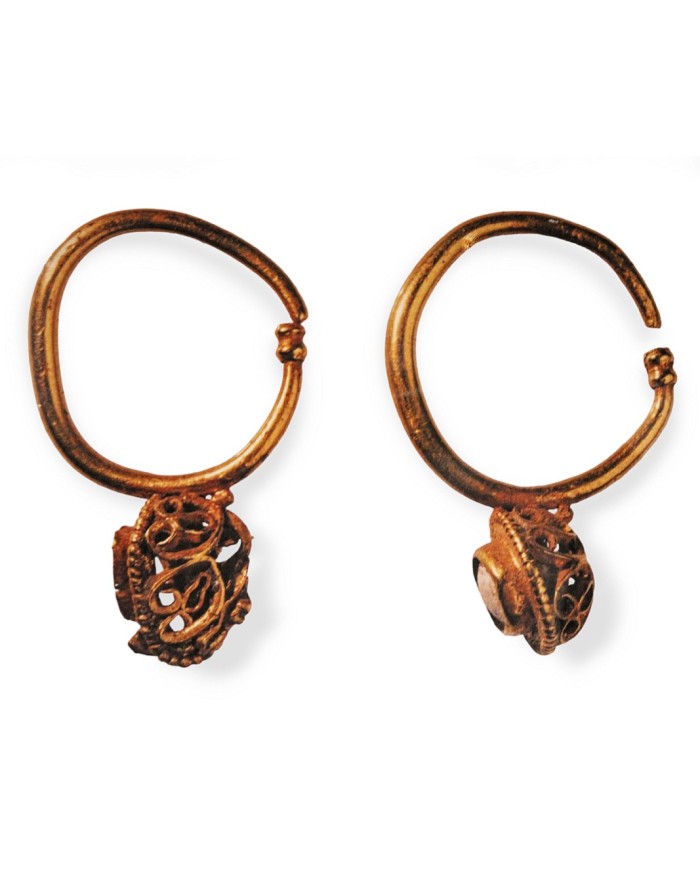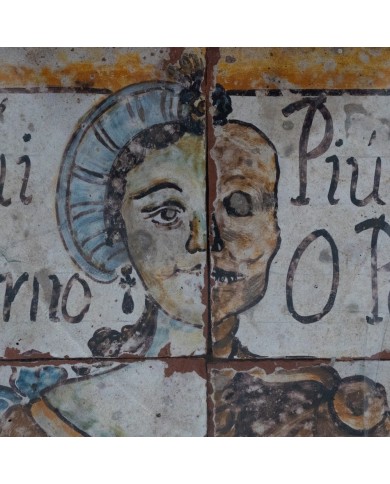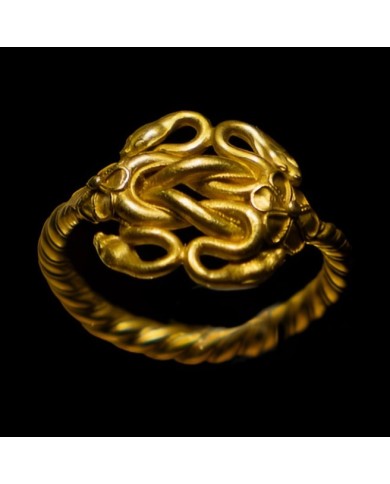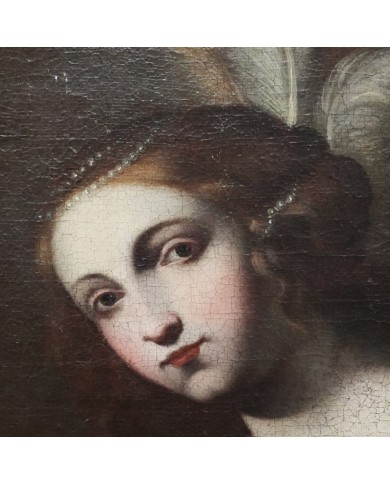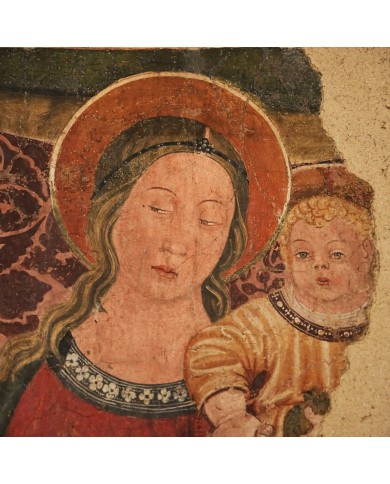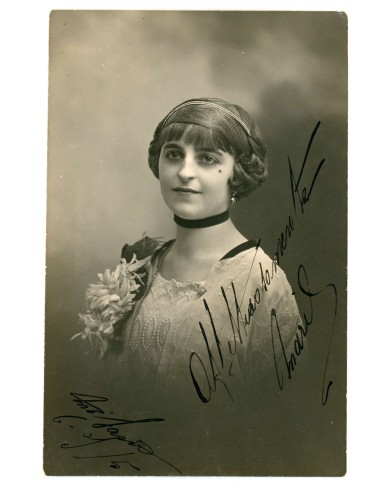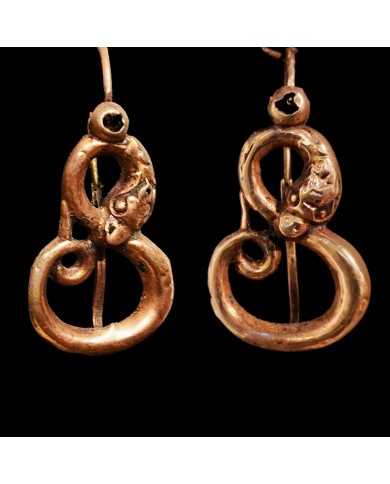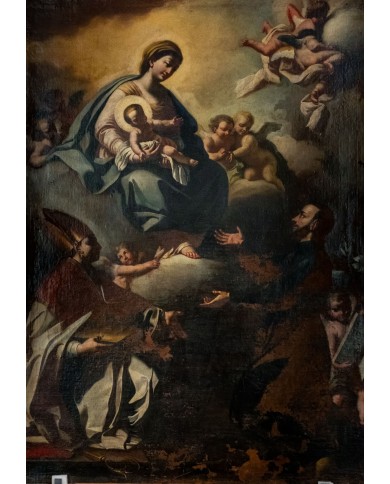The jewels of Pattano Abbey
The Abbey of Santa Maria di Pattano is a significant place in the cultural landscape of the Cilento area. On approaching the site, one's attention is immediately caught by what at first glance might appear to be a bell tower towering inside what today appears to be a sort of fortified masseria, surrounded by land now largely covered by centuries-old olive trees, planted with citrus trees, vegetable gardens or fallow land.
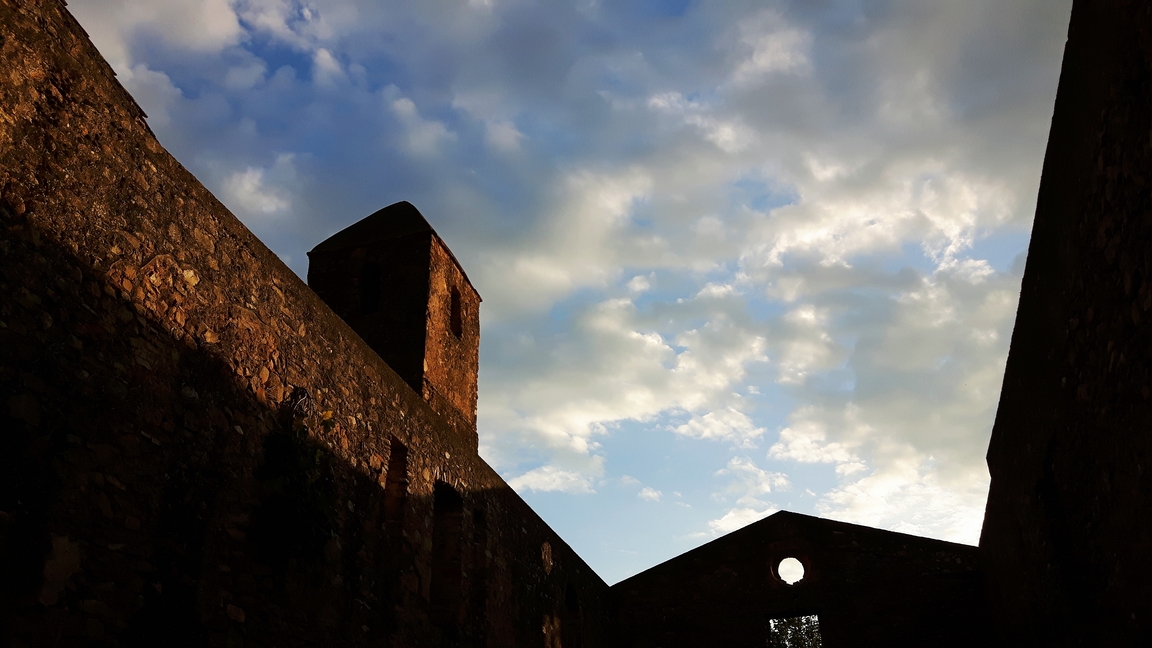
The Abbey of Santa Maria di Pattano was a monastery founded by Middle Eastern monks who, to escape the iconoclastic persecutions that began in the year 726, arrived in southern Italy and, travelling up Calabria or landing in Velia, settled in this area. The choice of the site of the Abbey was favoured by the fertile soil, the abundance of water and the presence of ancient structures, specifically a rustic Roman villa dating back to the early imperial age, several components of which were reused both in the foundations and in the elevated masonry. The oldest document that makes trace of the coenoby, reported by the 18th-century historian Antonini, Baron of San Biase, attests to its existence in 993 and points to a certain importance and prestige, of the coenoby and its monks, within the territorial context. The gradual evolution and flourishing of this monastery, up to the importance it assumed around the year 1000, was also due to the veneration of St. Filadelfo da Pattano, a hermit or one of the first hegumens of the coenoby (to whom the small church of the same name is dedicated, where the earrings, about which we will speak shortly, were found), who can be assumed to be the founder of the monastery.
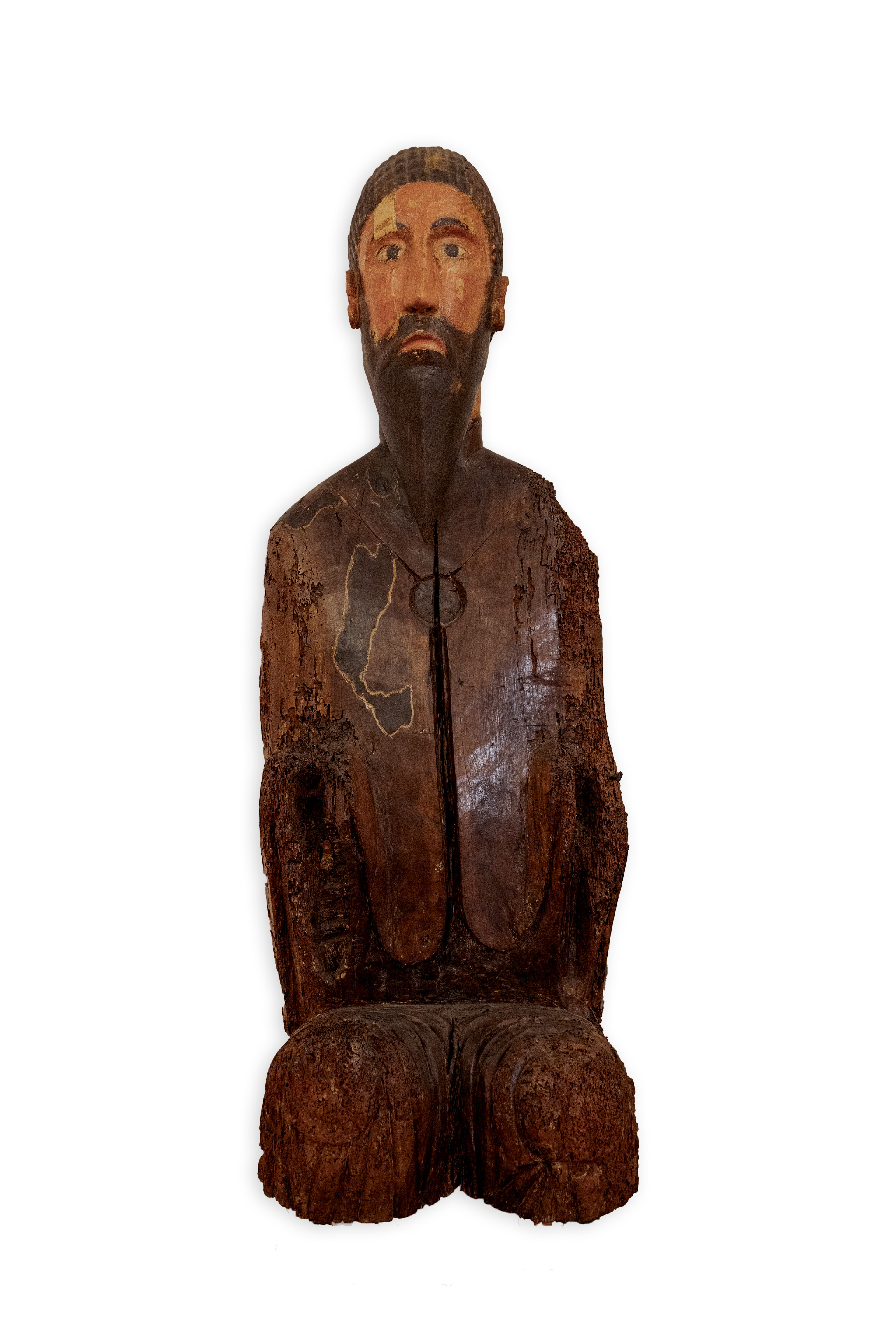
The Abbey prospered, also due to the wise administration of its hegumens who enjoyed great prestige for their wisdom and holiness of life: it is noted that in 1368 a monk, Iacobus de Patano, was called to Grottaferrata directly by Pope Urban V to rule the monastery erected by St Nilus. The presence of the coenoby of St. Mary of Pattano is attested until the second half of the 15th century in the Liber visitationis of Athanansios Calkeopoulos from the mid-15th century. This codex, preserved today at the Abbey of Grottaferrata, collects the minutes of the visits ordered by Pope Callistus III and Cardinal Bressarion, high protector of the Order of St Basil, which began on 1 October 1457 in Calabria and ended on 5 April 1459 in Pattano itself, listing seventy-eight monasteries of the Greek rite still officiating in southern Italy. When the visitors arrived, they were faced with a situation of spiritual, moral and material decadence that led to the suppression of the monastery with the bull of Calixtus III in 1457. In the Liber, we also find an inventory of what the apostolic visitors found, including a large library with Byzantine liturgical texts, three musical instruments (psaltery) and various gold and silver objects, of which nothing has survived.
In quo monasterio inveniuntur bona introscripta: triodia duo, stiyerarium unum, anastasima duo, psalteria duo, psalterium unum, glosatum, condacari unum, tipico duo, fotagogari unum, proficias duas, ayiopolitis una, anastasimum unum, minea tria, legendarium unum, stiyerarium unum, paraclitico unum, evangelia duo, epistula una, missalia tria, ecchologium unum, catanictico unum, vita patrum; casse II pezi di scarstafi xv, mitrie II, calix unus de argento, calix unus de piltro, chomali dui, planecte III, tonicelle II, tobagle XVII, grochiu una, copertorium unum de altaro, stole II, manipuli III, par unum vestimentorum alborum, carpitinicte II, cone II, scrignu unu cum certis reliquiis, scrigni dui, lectu I fornito, bucte XIII, mataracia duo, cultra 1, bacile unu de rame, lucerne III, mataracium unum de lana et unum de pennis, paro unum lintheaminum, carpita I, guardanappi II , tobagle Il de tabola, scrigni dui, tobagle II de fache, pezi XVIII de piltro, curtellu unu, serra una, zappa l, zappula I, pato unu de ferro, runca I, cugnte Il, achecta una, martello I, paro I de tinagle, cardu unu, casse II, balastea una. E in quel monastero si trovano i seguenti beni: due anastatici, due salteri, un salterio glossato, un condacario, due tipici, un fotagogario, due profici, un'aiopolita, un astatico, tre minei, un legendario, un stiyerario, un paraclito, due vangeli, un'epistola, tre messali, un ecologio, un catanittico, una vita dei Padri; due casse, 15 pezzi di scartafacci, due mitre, un calice d'argento, un calice di peltro, due comali, tre pianete, due tonicelle, 17 tovaglie, un grochiu, una coperta d'altare, due stole, tre manipoli, un paio di vesti bianche, due tappeti, due icone, due scrigni, con reliquie, altri due scrigni, un letto completo, tredici bucte, due materassi, un coltello, un bacile di rame, tre lucerne, un materasso di lana e uno di penne, un paio di tele un tappeto, due guardanappi, due tovaglie da tavola, due scrigni, due tovaglie da fache, diciotto pezzi di peltro, un coltello, una sega, una zappa, una zappetta, un palo di ferro, una roncola, due cugnate, un accetta, un martello, un paio di tenaglie, un cardo, due casse, una balestra.
Also in the Liber are the interrogations of the monks who, in recounting the misdeeds of the egumen Elijah, refer to a precious mitre from which he allegedly removed emeralds, saying he wanted to attach them to a cross: which, as the monks heard, Elijah did not do.
Item dixit quod dictus abbas destruxit quamdam mitriam, a qua expulsit certos smaldos, et dixit quod volebat ponere in cruce. Inoltre ha affermato che l'abate ha disfatto una mitra per ricavarne smeraldi dicendo di volerli applicare ad una croce.
As indicated by the papal bull, the King of Naples Ferdinand I entrusted the abbey to John of Aragon, the fourth son of the King and Isabella of Taranto, who died at the age of 30 from the plague in 1485, in Rome. In view of his very young age, the Abbey of Pattano was given over in 1465 to figures close to him. From these it passed, until 1489, to Giovan Battista Petrucci, son of the king's prime minister and archbishop of Taranto, and it is to the latter that one could hypothetically ascribe the introduction in Pattano of the cult of San Cataldo, to whom a chapel was also raised, later dedicated to the Virgin of the Rosary in memory of the Victory of Lepanto. After that, the Abbey passed in commendation to the Carafa family where there was no lack of disputes between the various branches over its assignment, passing between different clergymen of the same family. Thus we arrive at the beginning of the 19th century where, following the subversion of feudality in the French decade, the priest Agostino Giuliani and the Giuliani family acquired the complex and part of the pertinent land.
The Giuliani family turned the abbey into a flourishing farm, and by transforming the buildings, they adapted the habitable part to the needs of a country home for a wealthy family, as well as the peasant families who lived there. The cult of St. Philadelphus was to some extent perpetuated until the 1920s - on the initiative of the Giuliani family - with considerable influence in the local popular religious tradition. The complex remained in the complete ownership of the Giuliani heirs until the early 1960s, although in the following decades, its residential and agricultural use was still vivid in the memory of those who lived there at that time. A settler of the Giuliani family was Anacleto De Luca, cultivating the land for tobacco, citrus fruits and vegetables, which were also sold at the Sunday market in Vallo della Lucania, as has long been the custom among local small farmers. As the Giuliani heirs saw their portions, Anacleto De Luca purchased some of them, living in the complex with his family until the second half of the 1910s.
During the 1970s, a further owner took over, who, informed of the imminent imposition of a restriction by the Superintendency, began to demolish the precious St. Philadelphus Church with the declared intention of building a villa there. The destruction was foiled thanks to the immediate intervention of Pietro Ebner, and the incident became a matter of national interest, even in the parliamentary arena. Unfortunately, however, a new iconoclastic fury struck, causing the loss of significant parts of the frescoes, including the face of the Virgin, of which fortunately, at least one photographic representation remains.
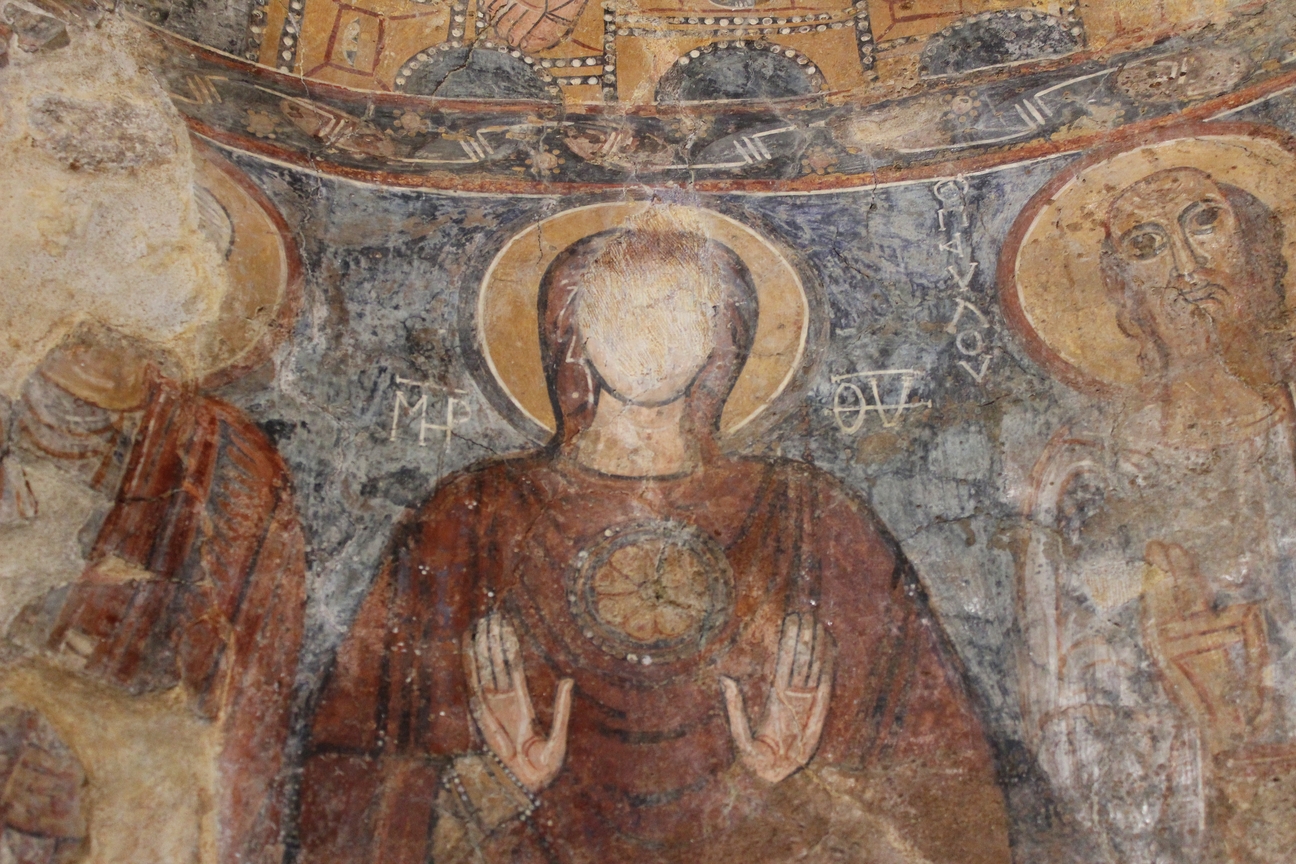
In the immediate aftermath of the serious events, Engineer Luigi Giuliani purchased the church of San Filadelfo and began to carry out the first urgent interventions, first with his own funds and, several times over the years, with public funds. After the 1980 earthquake, the first consolidation and restoration works were carried out. The last ones date back to 1998, directed by the same engineer. During the interventions in the early 1980s, archaeological evidence emerged that prompted an excavation campaign: burials from the 6th century were found underneath the Church of St. Philadelphus, one of which yielded gold earrings; an older phase of use, a thermal building, probably from a rustic Roman villa, also emerged.
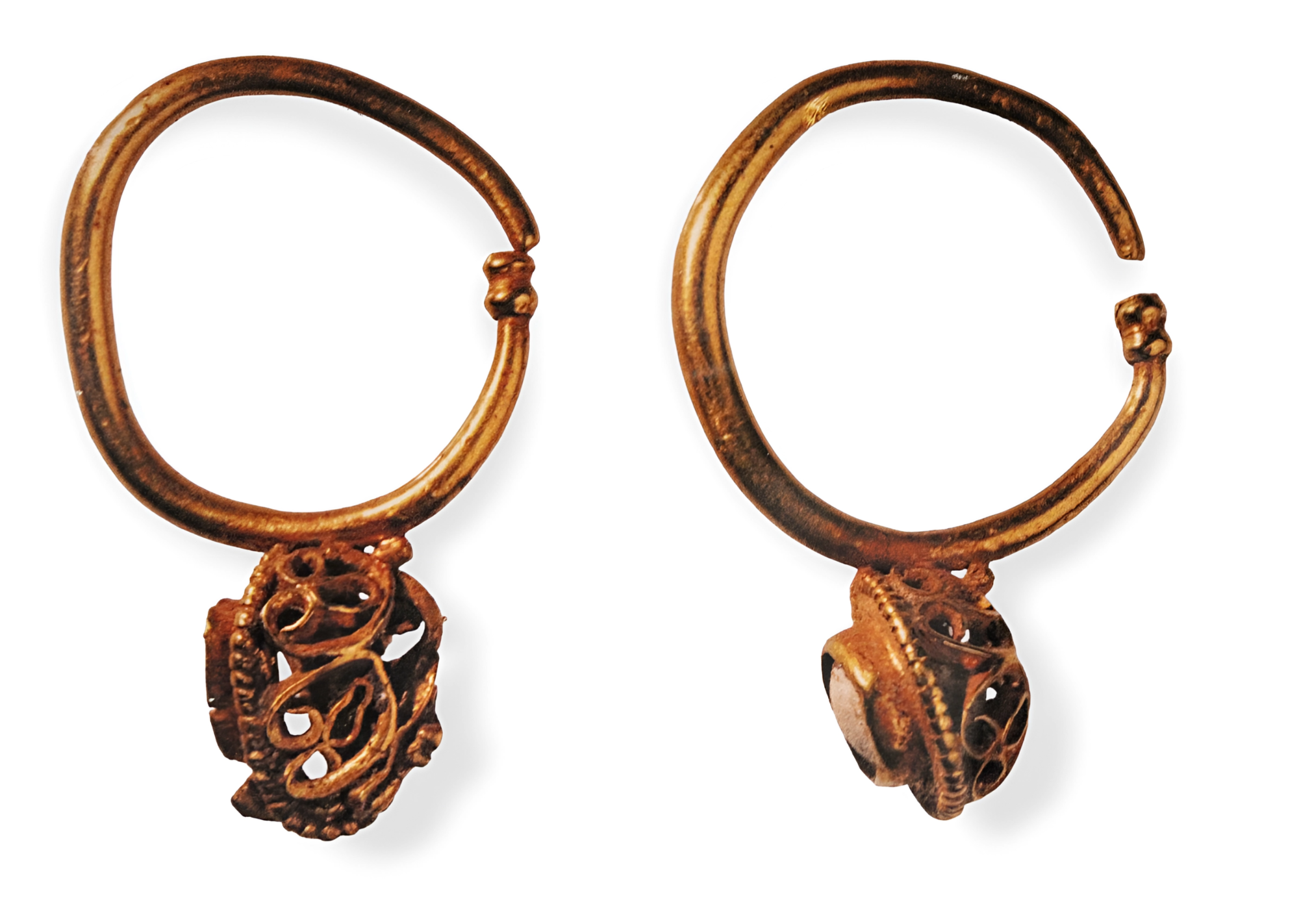
The gold earrings from the Pattano Abbey were discovered in 1981 during restoration work in the Church of San Filadelfo. While removing the floor of the right aisle, two tombs emerged with a trousseau composed of this pair of basket earrings and two single-handled jugs with a globular and ovoid body with a shaped rim dated late 6th to early 7th century AD. Basket earrings are a frequent type of jewellery in Lombard contexts whose origins are, however, uncertain and probably pre-date the Lombard presence. In the case that concerns us, however, these are earrings formed by a disc-shaped upper part, i.e. the suspension ring, which remains open in order to be inserted into the lobe hole. As can be seen from the pictures, the suspension rings of Pattano's earrings are composed of a smooth rod, with a circular cross-section, which in the upper part tends to taper to allow insertion in the lobe and, in the lower part, has a pleated, spool-shaped sheet.
To this suspension ring was soldered as a pendant the so-called basket, decorated with filigree (consisting in bending and weaving metal filaments), granulation (consisting in soldering metal grains on a sheet according to a pre-established design) or with bezels that could contain precious stones or, as in the case of the Pattano earrings, glass paste. Finally, there is a further element, which is the reinforcing element, consisting of a closing band that, in the case of the Pattano earrings, is absent because it is replaced by a small metal reinforcing sphere, soldered between the back of the basket and the suspension ring.As can already be guessed from the name, the basket is the characterising element of this type of earring and, starting from the basket, scholars have proposed classifications.loral basket earrings (Type 1) which have a chalice-shaped lower part with open petals resembling a flower; earrings with a pierced hemispherical basket (Type 2) made with the filigree technique, earrings with a hemispherical basket with a solid capsule (Type 3), earrings with a drum-shaped basket (Type 4) Further distinctions made by scholars distinguish the earrings of Type 2 according to how the beads were attached, either with one or more beads (Type 2a) or within one or more metal wires (Type 2b).According to this classification, Pattano's earrings would fall into Type 2a, since the basket of the two earrings is formed by four thin rectangular blades moulded to form volutes, made concave at the back and, at the front, closed either with a knurled wire and a smooth wire, with a wrought bezel in the centre that includes a glass paste cloisonne.Only of one earring, however, has the glass paste bead been preserved.
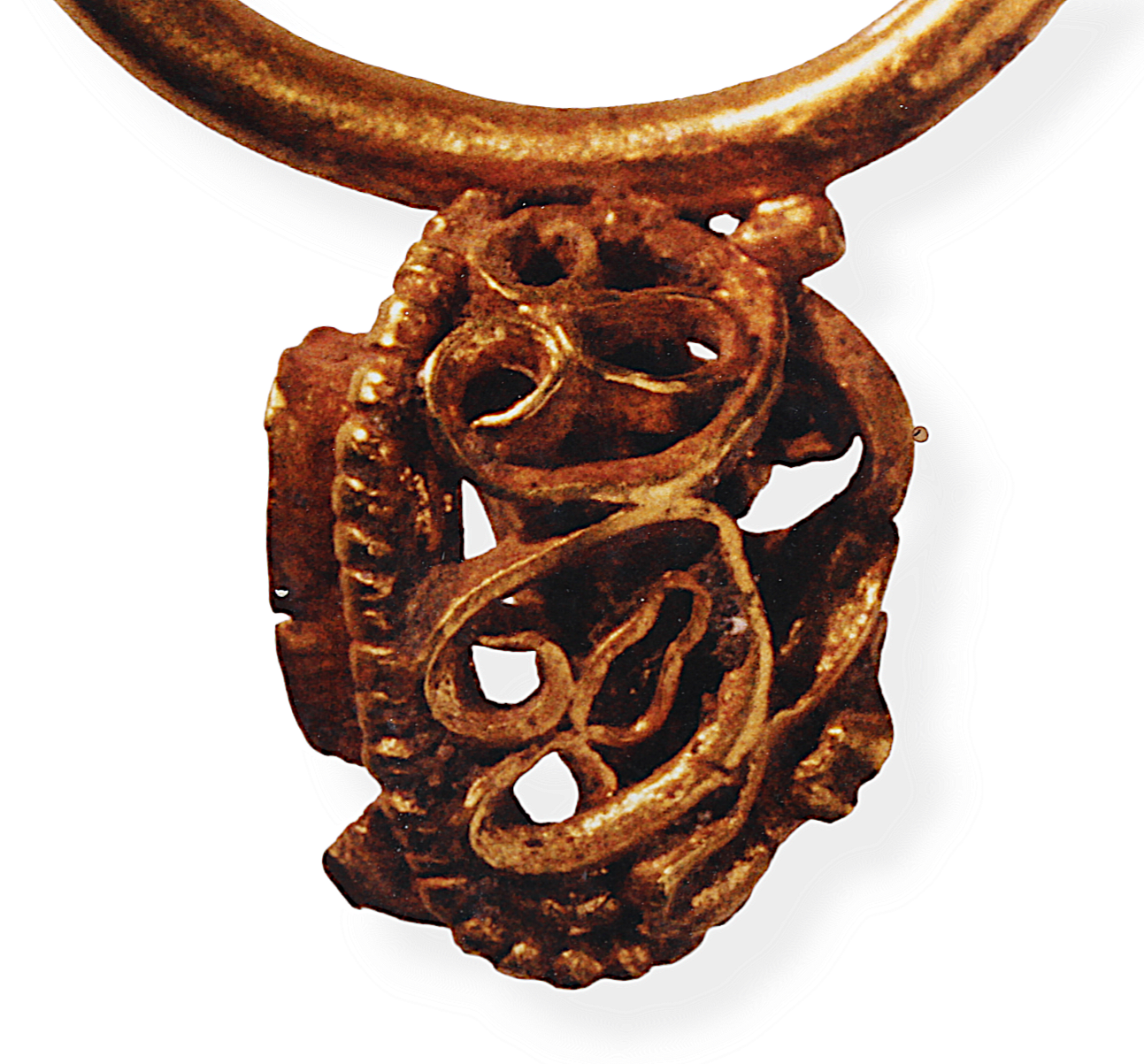
Lorem ipsum dolor sit amet, consectetur adipiscing elit, sed do eiusmod tempor incididunt ut labore et dolore magna aliqua. Ut enim ad minim veniam. Lorem ipsum dolor sit amet, consectetur adipiscing elit, sed do eiusmod tempor incididunt ut labore et dolore magna aliqua. Ut enim ad minim veniam. Lorem ipsum dolor sit amet, consectetur adipiscing elit, sed do eiusmod tempor incididunt ut labore et dolore magna aliqua. Ut enim ad minim veniam.
- Luigi Rossi, Vallen in Lucania. Storia di una Diocesi
- Luigi Rossi, Vallo della Lucania
- Maria Rosaria Marchionibus, La Badia di Santa Maria di Pattano
- Vincenzo Cerino, Badia di Santa Maria di Pattano
- Pietro Ebner, Storia di un Feudo del Mezzogiorno. La Baronia di Novi
- Pietro Ebner, Economia e Società nel Cilento medievale
- Cosimo Damiano Fonseca, Longobardi minore e Longobardi nell'Italia meridionale, in Magistra Barbaritas, Libri Scheiwiller (1984)
- Giuseppina Bisogno, Lo scavo nella chiesa di S. Filadelfo a Pattano in Atti del ventisettesimo Convegno di studi sulla Magna Grecia (1987)
- Alessandra Melucco Vaccaro, Oreficerie altomedievali da Arezzo. Contributo al problema dell’origine e della diffusione degli “orecchini a cestello” in Bollettino d’arte (1972), Alessandra Melucco Vaccaro;
- Elisa Possenti, Gli orecchini a cestello altomedievali in Italia, All'insegna del giglio (1994)
- Elio Galasso, Oreficeria medievale in Campania, Museo del Sannio (1969)

